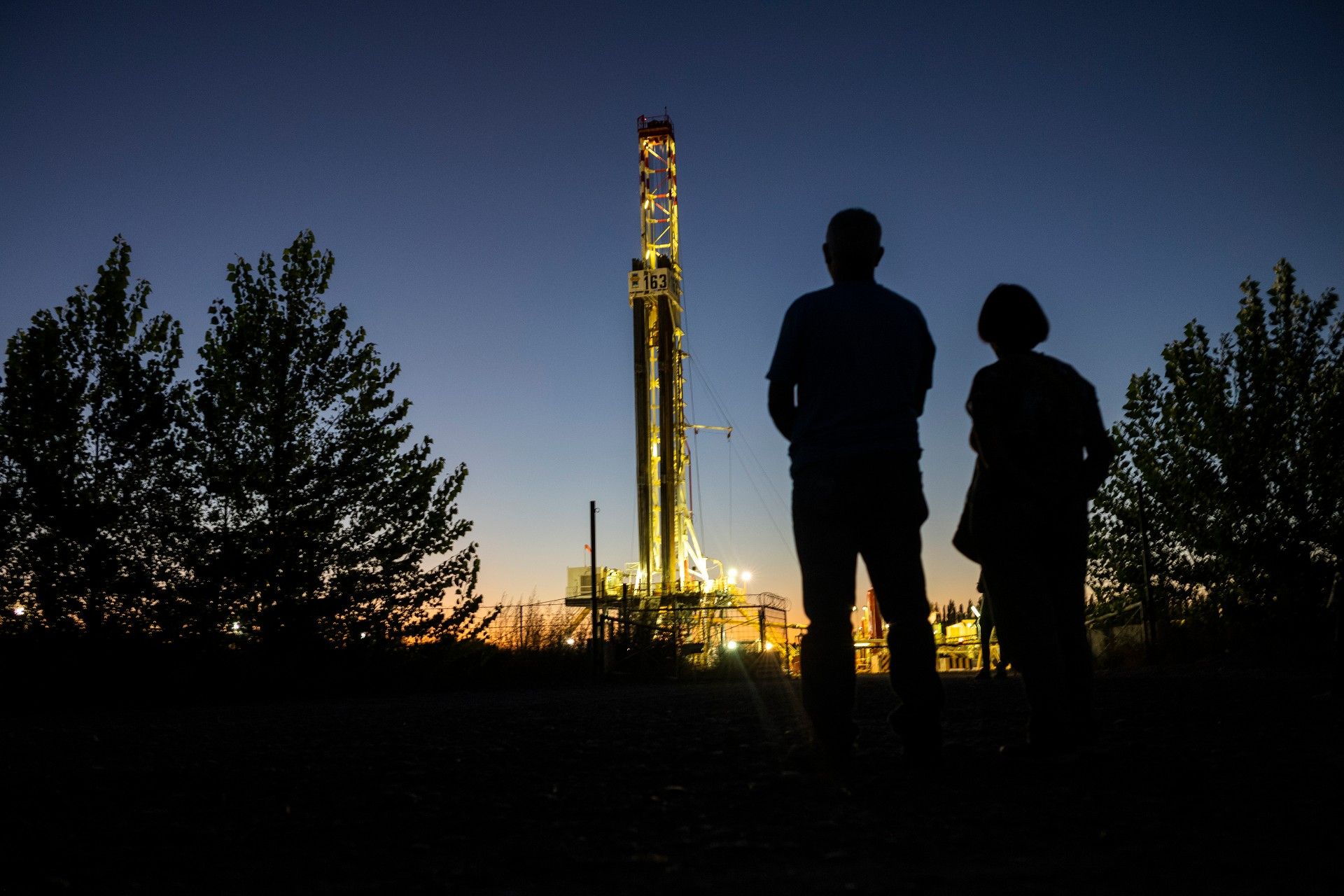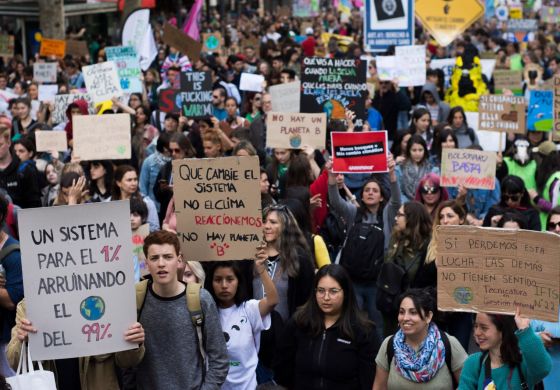Behind the gas and oil reserves, the energy matrix change and the billions invested, the death toll keeps climbing. Argentina?s biggest mega-deposit of non-conventional hydrocarbons and the world?s second-largest shale gas deposit that could be a great opportunity to the country?s economy is, however, a profit for a few and a tragedy for the majority.
Translation: Karen Elizaga
The victims of Vaca Muerta
In 2018, Vaca Muerta, the entrepreneurship that, according to the words of President Macri, was going to save the country, took the life of five workers: Julio César Sánchez, Mauricio Segura, Miguel Ángel Chocola, César Poo and Daniel Torres. So far this year, three more people died: 41-year-old Ariel Sajama who died due to an explosion that also left three more injured, 34-year-old Cristian Baeza and 24-year-old Maximiliano Zapia.
These “accidents” are closely linked to the agreement to increase productivity, sealed by the Argentinian government, the government of Neuquén province, the oil companies and the Private Oil and Gas Union of Río Negro, Neuquén and La Pampa.
“Production rates mean that the necessary safety measures are not being taken,” says a supervisor from YPF.
Out of sight, out of mind
Nahira, a seven-year-old girl, the older daughter of Estela Raninqueo y Adrián Jaramillo, also wants to give her testimony. “We can’t sleep because of the noise and my little sister cries nonstop because her ears hurt.” The family lives in East Cost neighbourhood, in Allen, Río Negro, two hundred metres from several oil wellbores and drilling towers that affect to the whole vicinity. But many of the neighbours have refused to talk because YPF offered them twenty thousand pesos to sign a non-disclosure agreement which prevents them from talking or making a legal claim.
“I remember the smoke, the unbearable smell of sulphur and the workers running away. A few days later, the birds began to die, and we started suffering from headaches.”
After the explosion, in July 2015, the works were postponed for two years. “I remember the smoke, the unbearable smell of sulphur and the workers running away. A few days later, the birds began to die, and we started suffering from headaches,” tells us Estela while holding her younger daughter in her arms. “Her name is Jaqueline,” continues Estela. “She is seventeen months years old. Last December, she went into convulsions. We don’t know why but we believe that the towers have a lot to do with it.”

What happens to this family is not an isolated case. The official answer is the same that we have heard for years regarding the use of chemical pesticides and its effect on human health. Authorities claim that there’s no clinical proof that shows the link between the fracking and the health problems that affect the local community. However, this is not true. After a decade of research, scientists have found enough evidence to declare that the water and air pollution and soil contamination caused by the industry is linked to adverse health impact through both, the exposure to toxic chemicals released during fracking, and the stress and anxiety caused by the light, noise and truck traffic associated with fracking.
“Fracking is a harmful innovation that impacts not only on public health but also on climate change. It is imperative to develop laws and regulations to preserve the environment and people’s health from the advance of the oil industry,” says Priscilla Villa, from Earthworks, a non-profit organization dedicated to protecting communities and the environment from the destructive impacts of mining, digging and drilling.
Sperm abnormalities, foetus’ damages, cardiovascular diseases and respiratory disorders are among the medical problems caused by the exposure to Volatile Organic Compounds
Close to one of the largest gas production fields in Río Negro, live dozens of families exposed to air pollution. “Methane, benzene, toluene, ethylbenzene, and xylene, between other volatile organic compounds, are endocrine disruptors. They can interfere with hormones even under low-level exposures. Sperm abnormalities, foetus’ damages, cardiovascular diseases and respiratory disorders are among the medical problems caused by the exposure to these gases,” explains Martín Álvarez Mullally, from the petroleum observatory Sur.
Lies that tremble
“They used to call us ‘indians’ in school. Darío Díaz, the mayor of Añelo, went to school with my son. He knows us forever. The former governor of Neuquén handed a badge to my aunt as the first settler of Añelo, and even the name of my grandfather appeared in a map of 1920 saying that he was the only settler of those lands. But suddenly, after Vaca Muerta was discovered, government officials said that we were not native people and that we had arrived recently” says Albino Campo, a former lonco (chief) of a community that became a pain in the neck for the national and provincial governments and also for the oil companies for claiming the ownership of the lands that once belong to them. In September 2018, a ruling ordered Patricia Bullrich, the minister of security, to refrain from intervening in the conflict, even though, in 2017, following her orders, gendarmerie officers had entered and occupied the territory, keeping several members of the community encircled for hours.
Before the fracking began, the government and the multinational corporations had promised that the earthquake risk was cero. Nevertheless, on March 7th, the village of Sauzal Bonito was struck by the largest earthquake ever recorded in this area: 4.8 on the Ritcher Scale. Not far away is “Fortín de Piedra”, the unconventional gas operation of Tecpetrol, Paolo Rocca´s company, which throughout 2018 had such an explosive growth that it was a surprised even for the industry.
Three months after they started drilling in the proximity of Neuquén river, the explosions began
“The walls and ceilings move, the houses are cracked, rocks fall off the mountain. We can hear little explosions underground, like a bomb that last only seconds. What if the house collapses and kills one of my grandchildren,” complains Celestino. At 71, he never saw anything like this.
For the Mapuche community Wirkaleo, there is no doubt. For three years, Tecpetrol has been drilling in the proximity of Neuquén river. Three months after they started, the explosions began. People from the company states that the drilling have nothing to do with it. Meanwhile, Civil Defence officials and INPRES (National Institute of Seismic Prevention) said that tremors are expected in the area and that they would take all necessary measures to ensure the safety of the population. But the naked truth is that there’s neither contingency plan, nor hospitals or ambulance nearby. The only firefighter in the area is begging for advice in case something more serious happens.
Is Vaca Muerta a billion-dollar business because no heed is paid to the number of lives and the amount of soil, water, air and biodiversity that is being lost forever?
The theory (and the practice) of the spill
Explosions, earthquakes, workplace “accidents”, toxic and highly polluting waste, health issues, deaths and major environmental consequences just around the corner.
If Vaca Muerta is such an extraordinary business, why haven’t they invested in prevention and safety measures? Or it is a billion-dollar business just because no heed is paid to the number of lives or the amount of soil, water, air and biodiversity that is being lost forever? And, in that case, can we still keep talking about Vaca Muerta as the great Argentinian opportunity?

“We live on this planet as if we had another one where to go”

"We are destroying our habitat"
Daniele Incalcaterra premiered the Chaco documentary, in which he gives an account of how businessmen and politicians collude so that he cannot return the lands of his father to the native peoples. A story that exemplifies the continent's great environmental problem.

"In 60 years, there will be not a single hectare of forest left”
The damages caused by soybean farming, the extractive dependence model and open-pit mining are absent from the Argentina political agenda. Carlos Vicente, a member of Action for Biodiversity and also a member of Grain, warns us about the risks of not taking into account future generations.
